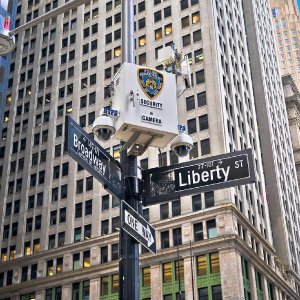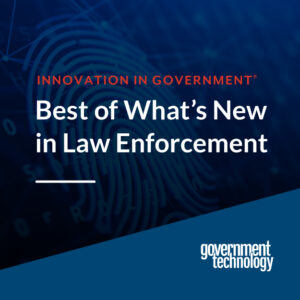In the fast-evolving landscape of public safety, a silent revolution has emerged with the concept of drones as first responders (DFR), search and rescue (SAR) life-savers and accident investigation accelerators. Incidents can happen anytime, anywhere. Whether it is a 911 call to the police, a missing person case or a traffic collision, time is of the essence. DFRs improve traditional response and investigation methods to save resources and time as well as reduce risk for first responders. With the emergence of drones as a public safety tool for initial response, DFR, SAR and accident investigations, a new era of efficiency and effectiveness has dawned.
Utilizing Drones as First Responders
In the past, arriving at the scene after any 911 call required precious minutes to mobilize personnel and equipment. The DFR model has changed this by significantly cutting response times. Equipped with high-resolution cameras, thermal imaging or other advanced sensors, drones can swiftly survey any scene from the skies and provide crucial data to first responders.
 In December 2015, the Chula Vista Police Department (CVPD) established the Unmanned Aircraft Systems (UAS) Committee with the primary aim of evaluating the integration of UAS into its public safety operations.[1] The subsequent drone program represents a groundbreaking milestone, as the nation’s first instance of employing drones as first responders. Since then, the initiative has reached a total of 16,736 calls responded to, 2,273 assisted arrests and an average response time of 96.66 seconds from dispatch to on-scene arrival.[2]
In December 2015, the Chula Vista Police Department (CVPD) established the Unmanned Aircraft Systems (UAS) Committee with the primary aim of evaluating the integration of UAS into its public safety operations.[1] The subsequent drone program represents a groundbreaking milestone, as the nation’s first instance of employing drones as first responders. Since then, the initiative has reached a total of 16,736 calls responded to, 2,273 assisted arrests and an average response time of 96.66 seconds from dispatch to on-scene arrival.[2]
In addition to speed, drones offer a unique aerial perspective and allow public safety professionals to understand the extent of the incident, identify potential hazards and allocate resources more effectively. This improved situational awareness helps first responders make informed decisions, while enhancing the safety of both citizens and personnel.
Enabling Search and Rescue Missions
SAR operations often involve difficult terrains and adverse weather conditions. These challenges have seen a remarkable transformation with the integration of drones. Drones can cover vast areas quickly and efficiently, greatly improving the chances of locating missing persons or survivors.
For example, the Weber County Search and Rescue (WCSAR) has taken a significant stride towards augmenting safety and efficiency through the establishment of a Small Unmanned Aircraft Systems (sUAS) program which provides invaluable aerial support to ground personnel. Prior to the sUAS program, the average search time for a person in distress was 4 hours and 35 minutes. Since the program’s inception, this time has been drastically reduced to 58 minutes.[3] These statistics underscore the impact of UAS technology on SAR operations, greatly enhancing response times and ultimately increasing the chances of successful outcomes.
Offering More Efficient and Effective Investigations
Accident investigations play a crucial role in determining the causes and contributing factors behind incidents, especially for traffic-related mishaps. Drones equipped with 3D mapping technology have revolutionized manual measurements and reconstructions by creating accurate digital reconstructions of accident scenes in record time. With a drone, a process that sometimes can take 6-8 hours by investigators can be accomplished in 3-4.[4]
What sets this modern approach apart is its data-driven essence. Drones, armed with their high-resolution cameras and advanced sensors, facilitate the collection of intricate data from accident scenes. This wealth of information serves as the bedrock for constructing precise digital reconstructions, offering investigators unprecedented insights into the unfolding of events. The Tippecanoe County Sheriff’s Office in Indiana reported a 60% reduction in overall scene time thanks to UAS deployment, allowing them to efficiently measure an 800-foot scene in just 22 minutes.[5]
Similarly, the Oro Valley Police Department in Arizona and the Houston Fire Department in Texas witnessed significant improvements in incident response times, with the former achieving a 32% reduction in roadway and incident clearance times, and the latter experiencing a 40% reduction in scene time, ultimately enhancing safety and efficiency in their operations.[6]
Looking Ahead
The journey of drones from being mere recreational gadgets to becoming indispensable tools for the public safety community has been truly remarkable. With advancements in technology, it can be expected that drones will become even more sophisticated and versatile in the future. The potential for integrating Artificial Intelligence (AI) to enhance drone capabilities, such as real-time object recognition or predictive analytics, holds exciting possibilities for improving emergency response, SAR and accident investigations.
In the near future, industry can anticipate drones with enhanced autonomy to work in coordinated swarms, learn from past missions and employ advanced object recognition. Fully autonomous drones will include on-demand deployment, emergency alert response, target tracking, obstacle avoidance, indoor flight, AI capabilities, GPS connectivity, voice commands, patrol vehicle integration, advanced threat detection and real-time situational awareness through live feeds.[7]
The concept of DFR and drones utilized in SAR and accident investigations is no longer a distant dream but a reality reshaping the landscape of public safety. These flying machines have proven to be first responders’ best allies, aiding them in saving lives, conducting efficient accident investigations and navigating challenging rescue missions. As regulations evolve and technology continues to advance, drones will play an even more pivotal role in protecting and defending the public.
To learn more about how Carahsoft can support your drones technology initiatives, visit our Autonomy and Robotics technology solutions portfolio.
References:
[1] “Chula Vista Police Department Drone Program,” Chula Vista Police Department, https://www.chulavistaca.gov/departments/police-department/programs/uas-drone-program
[2] “Dawn of Drones Podcast,” Dawn Zoldi, https://www.auvsi.org/dawn-drones-episode-81-miriam-foxx-captain-chula-vista-police-department
[3] Credit: Captain Kyle Nordfors, Mountain Rescue Association (MRA) UAS Chairman Weber County Sheriff’s Office (Utah) Captain – Alaska Airlines B737
[4] “Drones For Good: Saving Time And Lives With Faster Crash Scene Reconstruction,” DJI, https://www.dji.com/newsroom/news/drones-for-good-planting-crash-scene-reconstruction-photogrammetry-purdue
[5] “UNMANNED AIRCRAFT SYSTEMS FOR TRAFFIC INCIDENT MANAGEMENT,” U.S. Department of Transportation Federal Highway Administration, https://ops.fhwa.dot.gov/tim/docs/EDC-6_Factsheet_TIM_UnmannedAircraft_v2_508.pdf
[6] “Next-Generation TIM: Integrating Technology, Data, and Training,” U.S. Department of Transportation Federal Highway Administration, https://www.fhwa.dot.gov/innovation/everydaycounts/edc_6/nextgen_tim.cfm
[7] “Can AI drones help protect officers in these dangerous times?,” Police 1, https://www.police1.com/officer-survival-guide/articles/can-ai-drones-help-protect-officers-in-these-dangerous-times-Ii9BujqaIeEB0hkZ/

 Ransomware: The recent increase of ransomware and impact of successful attacks is driving urgency within law enforcement agencies to institute stronger cybersecurity strategies. Disruptions to police systems cause 911 calls to be rerouted, CAD systems to be disrupted, email and phone systems to be disabled as well as other repercussions. Cybercriminals also threaten to leak confidential informant, victim and officer details if the police do not pay the ransom. Investigations conducted to identify possible ransomware attack patterns revealed that there was no geographic methodology behind the hacks but that the common link was, any vulnerability found in an agency’s system was exploited.
Ransomware: The recent increase of ransomware and impact of successful attacks is driving urgency within law enforcement agencies to institute stronger cybersecurity strategies. Disruptions to police systems cause 911 calls to be rerouted, CAD systems to be disrupted, email and phone systems to be disabled as well as other repercussions. Cybercriminals also threaten to leak confidential informant, victim and officer details if the police do not pay the ransom. Investigations conducted to identify possible ransomware attack patterns revealed that there was no geographic methodology behind the hacks but that the common link was, any vulnerability found in an agency’s system was exploited. 2) Secure Investment
2) Secure Investment 5G will provide the platform for accelerated response execution. The widespread deployment of the communications standard will change how we approach resiliency, response and health care. It will enable everyone—from citizen to agency to first responder—to prepare and respond to the next health care catastrophe.
5G will provide the platform for accelerated response execution. The widespread deployment of the communications standard will change how we approach resiliency, response and health care. It will enable everyone—from citizen to agency to first responder—to prepare and respond to the next health care catastrophe. Anxious residents make appointments with retail vendors as well as states. If a resident gets a retail appointment first, they usually won’t cancel the state appointment. Vaccines must be administered within four to six hours; numerous no-shows risk wasting vaccine. Vaccination capacity is not achieved if appointment times are left unfilled, and this has a negative impact on the whole process.
Anxious residents make appointments with retail vendors as well as states. If a resident gets a retail appointment first, they usually won’t cancel the state appointment. Vaccines must be administered within four to six hours; numerous no-shows risk wasting vaccine. Vaccination capacity is not achieved if appointment times are left unfilled, and this has a negative impact on the whole process. Putting the Public First
Putting the Public First Supporting the Law Enforcement Community During COVID-19 and Beyond
Supporting the Law Enforcement Community During COVID-19 and Beyond